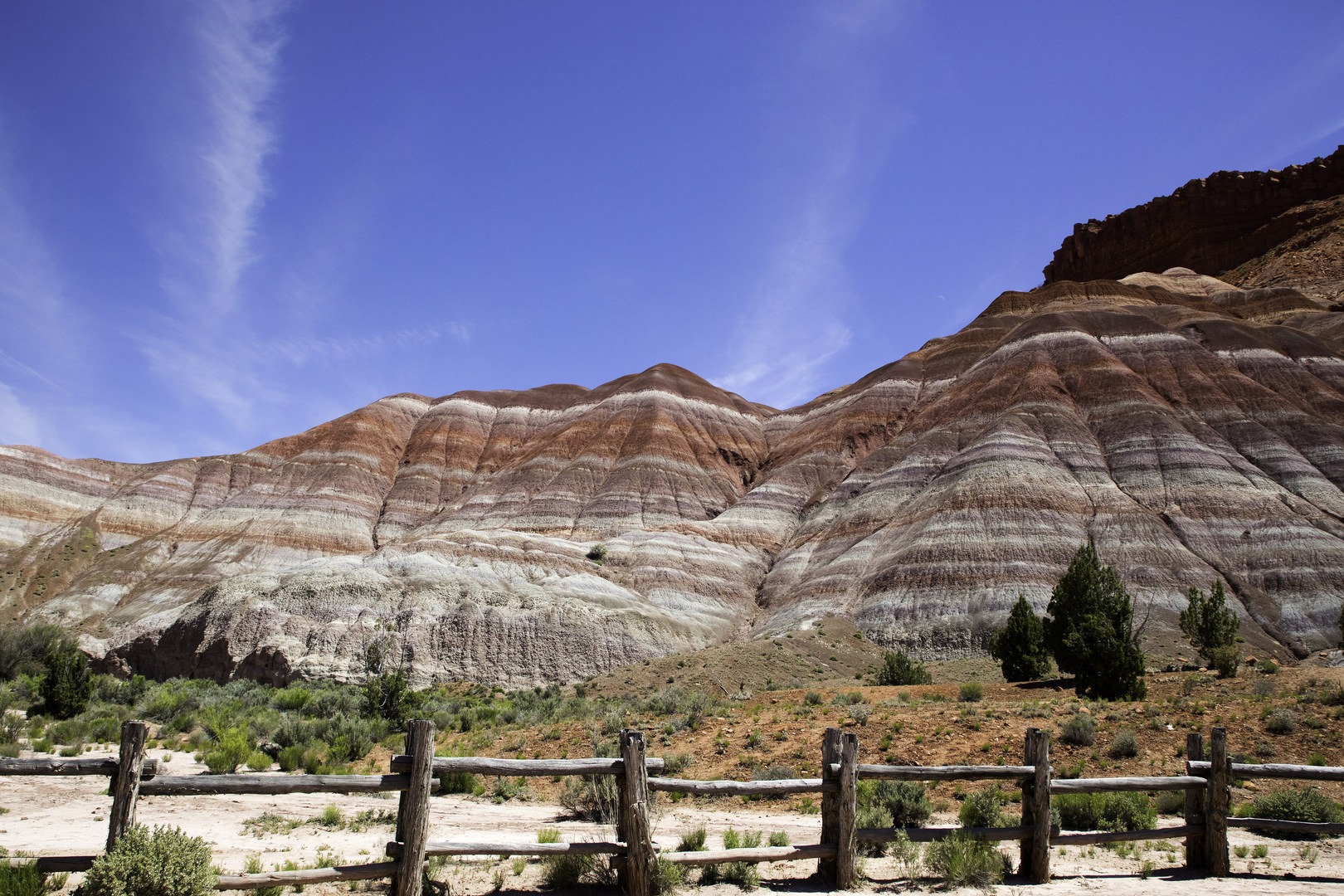You are here
Pahreah, also referred to as Old Paria, is a ghost town nestled along the Paria River in the Grand Staircase - Escalante National Monument in Kane County, Utah. Pahreah was inhabited from 1870 until 1929 and was later used as a filming location for many western movies. Today little remains of the town or the movie set because all the buildings have either collapsed, burned, or washed away in flood waters. The mountains surrounding Pahreah are layered in alternating bands of red, purple, white, and a bluish grey. It's a great stop to take in amazing views and to envision scenes from the Wild West.
The area was first settled in 1865 by a Mormon group led by Peter Shurtz. Shurtz constructed a strongly built sandstone house that led to this settlement's name, Rock House. After the Black Hawk War ended in 1867, settlers began showing up to this settlement at a rapid pace. This settlement thrived for several years until half the residents decided to move 5 miles up river due to a failing water supply and frequent attacks from Native Americans. This move formed the townsite of Pahreah in 1870, and homes were built and crops were planted. The town thrived and reached a population of 130, consisting of 47 families including 20 Paiutes. The town then began to face hard times starting in 1883 when the Paria River flooded every year for 5 years, washing away buildings and crops. The population dwindled due to the frequent flooding until only eight families remained in 1892. A short time later, in 1893, the town gained a post office under the name Paria. Not much changed in Paria until 1912, when a small gold mine was established. Unfortunately, the mine was also decimated by flood waters and closed within a year. The post office closed in 1915, and the town was empty by the 1930s.
In later years, movie and television crews became interested in using the abandoned town and it's picturesque background to film westerns. In 1943, producers filmed several scenes for "Buffalo Bill" here. As roads were built and tourism increased, producers for several other movies and television programs continued to use the area for filming from the 1940s throughout the 1970s, even though crews were in a constant struggle with the flooding Paria River. Then, in 1962, the old ghost town was chosen as the location for a Rat Pack film, "Sergeants 3," which was the largest western ever filmed in Kane County. The producers of this film were not satisfied with what remained of Pahreah, so they decided to build an imitation town just a mile away from the original town site. This imitation town was then used for filming until 1976, when it fell into disuse after the filming of "The Outlaw Josey Wales," starring Clint Eastwood. In 1998, more flooding badly damaged the set. A team of volunteers dismantled what was left of the set and built replica buildings between 1999 and 2001, also installing signs to explain the historical significance of this site. The rebuilt set met its demise in 2006 when it was burned down by a suspected arson fire.
Today you can reach the Pahreah day use area by following a dirt road for approximately 4.6 miles. This section of road is generally well maintained, but use caution if it is wet. Once you reach the day use area you will see a large fenced-in parking lot and a wooden outhouse. You can also find placards telling the history of the town and movie site. The road continues for a mile past the day use area until it reaches the banks of the Paria River. This portion of the road is generally extremely rough or impassible due to frequent flooding. You have to cross a dry wash several times and pass the cemetery, which houses approximately 20 graves, before reaching the edge of the river.
To reach the original townsite, you will have to park and hike across the river. The road to the day use area can become impassible when they are wet. A high-clearance four-wheel drive vehicle may be able to make it beyond the first stream bed crossing, but be prepared to get out and walk the final distance to the site.
Logistics + Planning
Current Weather: Powered by Dark Sky
























Comments
Sign In and share them.